
Curating the Invisible: The Virtuale Switzerland in Basel:
an interview with Artists and Curators from the Virtuale Switzerland Festival by Virtuale Switzerland
I
Vision and Curation in AR
Virtuale Switzerland: The Virtuale Switzerland is the 1st festival for virtual art. Why was Switzerland chosen?
Arthur Clay: First off, the Virtuale Switzerland is a festival celebrating digital culture, which showcases new works from artists as well as digital designers form around the world, who make creative use of emerging technologies and explore the impact of digitalization in open public space. The planning strategy for the festival was to present it in a select city in each of the regions of Switzerland that are separated by language. We choose Basel which is one of the cities from the German-speaking region, Lausanne which is French speaking, and Lugano which is very close to Italy and Italian speaking. The reason for this is very Swiss and was done so that there could be a form of cultural exchange between the regions, which would help to loosen the cultural boundaries between the regions.
V.S.: Do the exhibitions differ for each of the cities chosen in which it takes place?
AC: The Virtuale for Basel presents a dozen or so virtual artworks spread across the city in both sides of the Rhine, inviting visitors to explore a unique collection of virtual artworks on both sides of Basel. A number of the projects for the Virtuale for Basel focus on interesting aspects of the history and culture of the city. The project “Money Can Buy You Love” by Curious Minds is an interactive project that expresses new and fresh ideas about future and finance and celebrates at the same time the 500 years anniversary of the Rathaus Basel. The “Meet the Music” is an interactive project as well and celebrates the tradition of the Basler Totentanz and platforms a series of compositions under the title of “Danse Macabre” by noted composers from Basel in a playful way using Augmented Reality. However it is really important to keep in mind that the goal of the Virtuale Switzerland is broader and the focuses is actually on how to transform public space anew by placing creative accents in virtual space that connect with their physical surrounding and which create new experience of technologies made possible first in the 21st Century.
V.S.: What do you think is new or innovative with the festival?
AC: In general, the festival really makes use of the latest mobile communication technologies such as smartphones and tablets to create an exhibition using Augmented Reality, and offers a new way of experiencing the arts by engaging the general public through participation, exploring new approaches to consuming art using the “playfulness” of the mobile phone culture of today. And what I think is new in this exhibition in terms of presenting Augmented Reality works is the actual design of the viewing experience. On the one hand, the works are very well integrated into their environment, because of how they completely integrate into the environment they are placed, but also the fact that they pose a kind of dialog with it; and on the other hand because there is a certain psychodrama that is natural to the routes.
To bring an example of what is meant by dialog, a number of the projects for the Virtuale for Basel focus on interesting aspects of the history and culture of the city. The project “Money Can Buy You Love” by Curious Minds is an interactive project that expresses new and fresh ideas about future and finance and celebrates at the same time the 500 years anniversary of the Rathaus Basel. The “Meet the Music” is an interactive project as well and celebrates the tradition of the Basler Totentanz and platforms a series of compositions under the title of “Danse Macabre” by noted composers from Basel in a playful way using Augmented Reality, in order to meet the music in the city as one strolls through it.
Image 1. Google Map layout showing AR work distribution in the City of Basel
II
Beginnings
V.S.: Did you choose to focus on Augmented Reality because it is a new technology?
AC: Augmented Reality is as a concept not something new. The effect can be traced back to a few artists such as Moholy Nagy or Marcel Duchamp, who both used transparent materials in their work in order to create the illusion of having augmented reality. Then there is Myron Kruger who was considered to be one of the first generation virtual reality and augmented reality researchers. He was the creator of such works as “Videoplace” and “Small Planet” which explored art of interactivity, as opposed to art that happens to be interactive. He was very inspiring to me and I think also to many who were interested in creating a virtual reality that is immersive as well as playful.
And then there is Jaron Lanier who founded VPL Research which lead to commercializing virtual reality technologies and which I think inspired films like the American “The Lawnmower Man” in which the computer-generated imagery created for the which although not generated in real time, clearly points at the goals of the actual virtual reality technology. Also many of the graphics elements in that film for example the use of a tunnel are picked up time and again by artists and it is interesting to see how this migrates without intention over diverse generations.
Image 2. Detail of “To Be Looked at (from the Other Side of the Glass) with One Eye,
Close to, for Almost an Hour” by Marcel Duchamp (1918)
V.S.: When did your interest in Augmented Reality begin?
AC: If you turn the clock back twenty years, it was very tough to create Augmented Reality works as an artist if you were not at the same time a computer scientist as Kruger was. It is important to note that Krueger exchanged teaching for institutional project support and Lanier was gainfully employed in the games industry. Further, NATO.0+55+3d was first released by 0f0003 Maschinenkunst in 1999 and although Max MSP has been around since 1999, the Jitter objects came after the NATO objects. So whatever one did or wished to do with AR before 1999 there was no easy solution to be had.
In the early 1990s, I was awarded a research residency and was invited by the late Michel Waisvisz to come to STEIM to design a number of controllers for live-performance. At STEIM, I got interested in a piece of software that they were developing which used light to trigger MIDI events. The application was created to be able to conduct an invisible orchestra using hand gestures. However, because it used a live camera feed to trigger events, it was easy to imagine that the system could be adapted to create an immersive AR environment. I actually accomplished this and created my first AR work. It was tilted “Auto-Bi-.Graphy” and adapted the software to create an artificial reality system in which a person could create something new with the images, sounds and even language of another artist. For this work, I chose Duchamp. The work was very successful, received a rather prestigious prize, but was used such an involved set up that it took about three days to set everything up and get it calibrated for a performance.
The Virtuale is therefore a return to early interests and work. The technology used has become so compact and user friendly that the return is a lot less painful and much more fruitful.
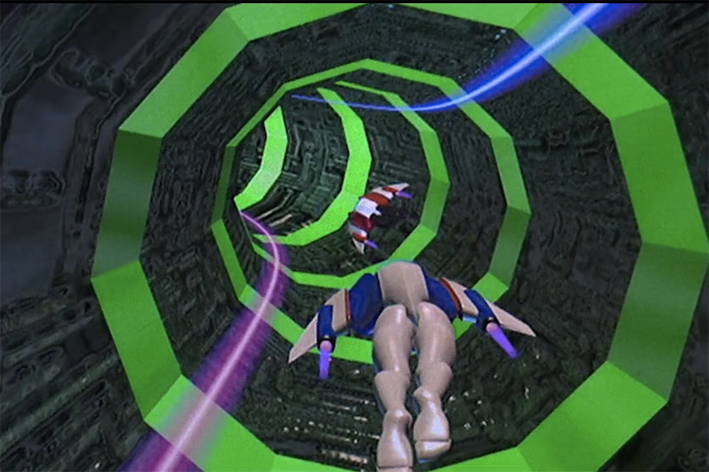
Image 3. Screen shot of video game sequence from “Lawnmower Man” with tunnel motive
III
The Artists and their Work
V.S.: Can you give some information about your background as an artist? How did you get first involved and interested in art in public space?
Will Pappenheimer: For much of my artistic life I’ve been interested in the borders of art and life, in its contexts as well as its potential to blend into the world at large. Up until the late-1990s, just after graduate school, I had worked with a large range of media from painting to video and installation. At that point the Internet was beginning to unfold into a rich cultural and visual second world. Sensing that it represented the future of artistic exploration I began to look at ways of making work from this conceptual and social vantage point. With new media, there emerged the potential for making works that invited participation from anyone rather than just the art world. This possibility led to my interest in a potential for what I would call virtual public art. At the same time I also have been particularly interested in not just virtual objects but how these overlay or interact with real or physical space. So a number of works I have made have components that involved physical objects and spaces interconnected and influenced by virtual participation. My introduction to augmented reality in 2010 raised the possibility of placing objects and experiences into very public and even iconographic spaces, visually and conceptually. So this was and is what I see as a very public site for virtual artworks and one that I treat as a response or challenge to these sites. Since these works are accessed through highly available and public mobile media applications and devices the audience is potentially the public at large. They are cited by GPS and the audience must encounter them on site to have the full experience. From this basis I usually work to create an alternative experience or interpretation of the institutional dynamics, embedded meaning and aesthetic relations of a particular site.
V.S.: and what about you John Craig?
John Craig Freeman: I am a founding member of the international artists collective Manifest.AR, a group that came together in 2010 based on our interest in using augmented reality technology as interventionist public art. I seek to expand the notion of public by exploring how digital networked technology is transforming our sense of place. I make site-specific work in locations where the forces of globalization are impacting the lives of individuals in local communities. I began using emergent technologies to produce large-scale public work over twenty-five years ago. One of the earliest major works I created was Operation Greenrun II which consisted of eleven 10′ X 40′ billboards, made of over 2,000 individual bitmap images printed on a simple office laser printer, the emerging technology of the time. One of the billboard images from this project was recently replicated for the Rocky Flats Then and Now: 25 Years After the Raidexhibition at the Arvada Center for the Arts in Colorado.
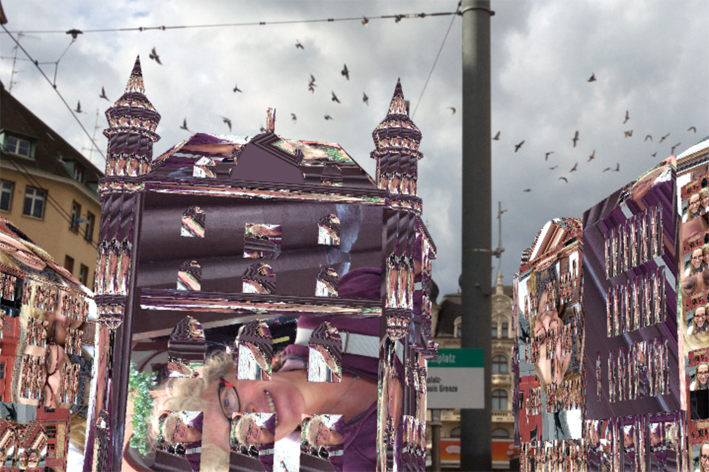
Image 3. “My Mirror City” by Will Pappenheimer
V.S.: Can you please tell us about one of the project you realized in public art space for the Virtuale Basel?
WP: MyMirror City is an ongoing artwork by artist, Will Pappenheimer, currently located on the Erasmus Route at the Marktplatz in Basel, Switzerland for the “Virtuale Switzerland” Biennial opening, June 16, 2014. MyMirrorCity transforms the areas of the cityscape into virtually mirrored buildings. The project harnesses the widespread use of instant cell phone snapshots, “selfies,” uploaded to social media space as self-reflection, as momentary chronological diary or personal identity. This daily practice, this obsession, now appears writ large. Participants leave their building sized images until the next users decide to add their own. A dialogue from one person to another is created through the ubiquitous presence of the participants’ imagery. Participants take a cell phone picture of themselves or surroundings upload it, and it then appears on every facet of all the buildings around them in augmented reality space. When a second person uploads their image, it appears on alternate building facets such that a self-image dialogue is created. The cityscape, now viewed through the cell phone or iPad, is a multi faceted architecture of this interpersonal relationship of image exchange and juxtaposition.
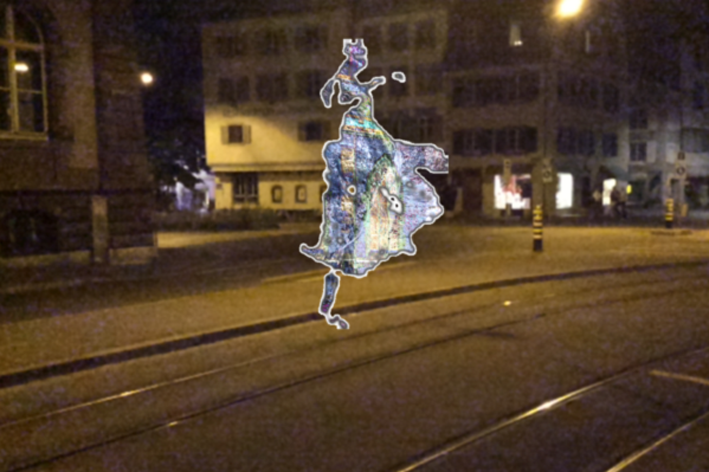
Image 4. “PAUSE” by Lalie Pasqual in the Botanical Gardens in Basel
V.S.: 2. Can you also please tell us about the projects that you’ve realized in public art space for the Virtuale Basel?
JCF: EEG AR: Things We Have Lost, Basel consists of a citywide public art installation viewable on smartphones and other mobile devices. People were selected at random in the streets of Basel and simply asked, “What have you lost?” Their responses were recorded along with the location, and a database of lost objects was created based on the responses given, The lost objects were then placed back in the exact GPS coordinates where the encounter took place, creating a citywide network of lost things. The lost objects can be found on Basel’s Jakob Burkhard Scenic Walk along the Freie Strasse, on Barfüsserplatz, around the Kunsthalle and down the Heuberg and Spalenberg. Touch each lost object to view a video of each individual reflecting on what he or she has lost.
V.S.: Which is a project are you working on now?
Lalie Pascual: For Virtuale Lausanne (upcoming in Spring 2015) I would like to develop the short animations creating a virtual mechanical clock, inspired by the “horologe animée” in Place de la Palud. I am also working towards a one-person show with the art and science program of the Centre Hospitalier Universitaire Vaudois.
IV
Defining Public Art and Artists.
V.S.: How would you define yourself as a public artist and/or media artist?
TT: I am interested in the collision of the virtual and the real and the body in space, whether that space is public or private, and media art is a fascinating medium that can engage these spaces in a way we have not been able to do before.
As an artist working in public space it is similarly the resonance between site and content that attracts me. In Basel for the Virtuale Switzerland, both my “Water Lily Invasion” and “Biomer Skelters” (with Will Pappenheimer) bring a wild and potentially dangerous nature directly into a cozy, closely built Medieval and Renaissance city center. “Biomer Skelters” turns pedestrians wearing our bio sensor AR system into conscious agents of climate change, overwhelming the narrow streets of the city with virtual wild plant growth generated in their wake as they walk the streets – human agents of a Nature gone beserk. My “Water Lily Invasion” brings a dangerous mutation directly into Basel’s central playground: the Rhine River which divides the city in two and whose ferries provide daily communion with a usually tame Nature for many of its citizens. First seen infesting the Hong Kong ferries, these giant water lilies have encroached into the seemingly tamed and domesticated Rhine, lunging at viewers and engulfing them in their brilliant flowers in a moment of unnerving beauty.
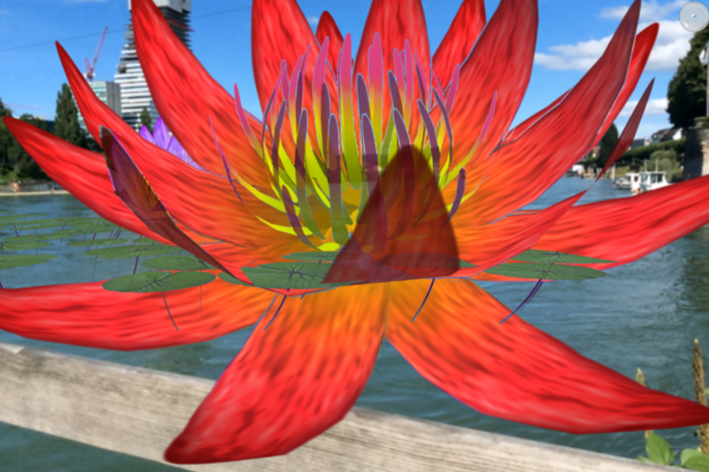
Image 5. “Water Lily Invasion” in the Rhine crossing by Tamiko Thiel
V.S.: How do you think that media art and public art can be found under the same umbrella-can you give us an example referring to your work?
Tamiko Thiel: Art has always overlaid public spaces with cultural dimensions of memory and reference, most often expressed in legends and stories. Augmented reality can now make this visible to all as part of a collective and very real visual experience. Additionally, interactive media art can give the audience agency and put their senses in direct conversation with the public space in ways that a sculpture or painting cannot.
To extend the discussion of my artworks above: The installation of mine in Basel for the Virtuale Switzerland, in Münsterplatz by the main cathedral, is “Shades of Absence: Public Voids.” In this work, gold silhouettes, representing artists whose works in public space have been censored, are surrounded by terms of censorship. This is a rare time when I do use a click sensor – in order to give the viewer background information that is outside of the experiential and kinesthetic encounter with the artwork in space. Touching the artwork on the display of a mobile device leads the viewer to a website with cases of censorship in public space for the artists depicting in the piece, and many more besides. The encounter with this artwork reminds the viewers that so-called “public” space and “public” art is very tightly controlled by several layers of authorities, from the state, city and curatorial levels. It is the singular gift of augmented reality to the genre of public art that no authorization is needed to install and view such works, no authorities or vandals can destroy or remove the artworks, and solely the artists decide how long to leave such works on site and accessible to the public.
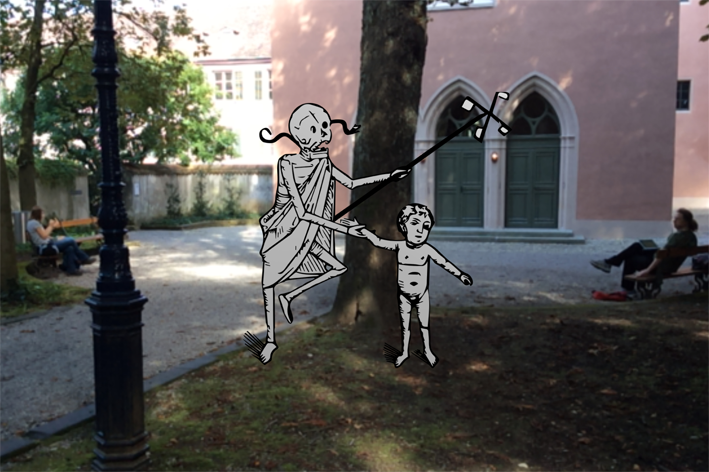
Image 6. “Danse Macabre” by The Curious Minded
V.S.: Which skills do you think might be required for the audience to become an active part of the work exhibited?
AC: The audience for the Virtuale doesn’t have to be digital natives to view any of the AR artworks, however I think it is important for them to have a bit of curiosity and at times perhaps a bit of patience. Patience is needed, because AR artworks rely heavily on GPS and it is not at as accurate as we would like it to be. Therefore, finding and exploring the nature of the AR artwork needs time and has become part of the actual process of viewing the works. Curiosity counts because engaging with something new as Geo based AR requires a bit of imagination and also a willingness to explore with that imagination.
V
The Audience Outside
V.S.: Did the audience understand your aims and responds accordingly in Basel and did the experience give you some ideas about an open-space discussion with the artwork?
TT: Surprise and delight were the common reactions when audiences discovered the seemingly “empty” spaces were inhabited by complex visual installations. For most it was a very new experience to be actively shifting between different views of a single space in real time. With “Shades of Absence: Public Voids,” for example, shifting between the large and very open Munster Square and the enclosed, confining subspace of the semi-transparent “pavilion” of words was a distinct shock, as it altered their bodies’ relationship to the space around them. Users of the bio sensor AR system for “Biomer Skelters” were surprised to find how sensitively their bodies responded to seemingly minute variations in inclination and declination of the city streets, and delighted at how the virtual flowers transformed the bare stone spaces of the inner city into a seemingly riotous, “organic” flower garden. Riders on the Rhine ferries, used to the river as a wide open, empty and placid space in the middle of the city were both delighted by the beauty of the giant water lilies, and somewhat unnerved at the feeling of being trapped on a small boat as the flowers seemed to lunge at them and engulf them.
Viewing the city spaces of Basel augmented by my artworks sharpens the audience’s perception of these spaces and the spaces through which they move in order to encounter the artworks. This experiential dialog between space, place and artwork is for me the core of any discussion about open space and art in the public realm.
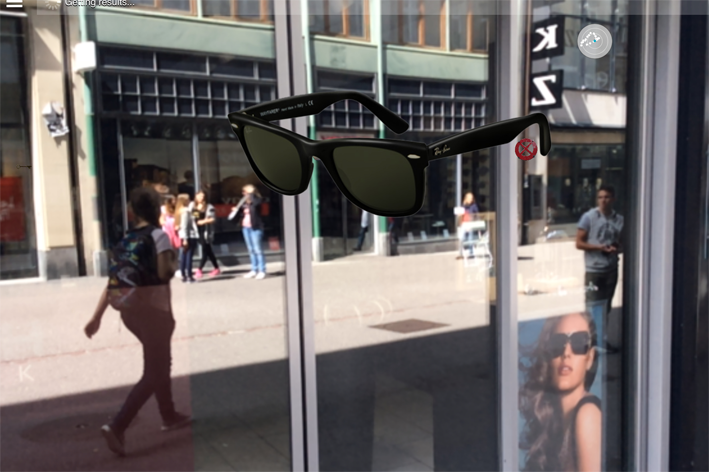
Image 7. “EEG AR” by John Craig Freeman
V.S.: How audience participation has shaped project and gave you feedback?
JCF: Audience participation is central to the “EEG AR: Things We Have Lost, Basel” project. The audience provided the content with their responses to the question “What have you lost?” and viewers actively tour the city in search of lost things. The use of location aware mobile-networked technology has become pervasive within our culture. As an artist trying to make relevant work in the twenty-first century, I find it hard to imagine not using it in my own practice. These days, people expect to have agency in their experience.
The idea of collecting cultural production and housing it in institutions for public consumption is a relatively new approach to art dissemination, one that corresponds to the rise of commodity capitalism. In the past, all art was location-based and site specific. From the cave paintings of Lascaux to the great renaissance cathedrals of Europe, being there mattered, and getting there was part of the experience. Accordingly, EEG AR: Things We Have Lost, Basel has more in common with the practice of pilgrimage than anything happening at Art Basel.
Image 8. Biomer Skelters by Will Pappenheimer & Tamiko Thiel
VI
AR and Interactivity
V.S.: How central is interactivity in your work?
TT: The kinesthetic and visual interactivity of the viewer with the virtual artwork in space is central to my work. Most of my works are immersive 3d spatial installations that the viewer must actively explore, using their mobile device as a “magic eye” to uncover and examine the artworks that surround them on a hidden dimension of our real space. In “Biomer Skelters” their bodies – via their heart rates – are the actual triggers that generate the virtual plants as they walk the city. In “Water Lily Invasion” it is the active, searching gaze of the viewer that attracts the water lilies and causes them to lurch at and try to engulf the viewer. It is not a prosaic “point-and-click” interaction, but a kinesthetic involvement of the body and the gaze of the viewer.
V.S.: How central is interactivity in your work?
WP: Interactivity, although it is not always part of my works, this the vehicle for participation in my works that gives them an audience based generative dimension. It is an inherent potential of new media work and it challenges the notion of the artist as the single auteur. It can set up a more open-ended artwork and create an externally situated artwork with unexpected results. With its inclusion in my augmented reality works, my hope is that the audience becomes more involved and in some sense gets a kind of democratized access to public space. Conceptually, in this case, it represents a kind of public challenge to private or highly controlled institutional spaces the same way that blogging challenges the primacy of private or official news sources.
V.S.: From your own experience, who is interested in public art/media art projects?
AC: Today’s revolution in mobile and wireless communication networks creates an interest in the general public for technologically oriented public art. The interaction element of information technologies used in public space changes the way people perceive public art and at the same offers it a possibility to spread new knowledge for everyone to explore.
In a similar way it’s important to notice how social networks have changed Vitruvian man into a gadget man, and how intangible public space has changed the way in which people engage in a city. They are able communicate with each other fluently and because of this, we became part of dynamic society which possess the ability to partake in spontaneous collective activities and movements on the intersection of real and virtual worlds.
Image 11. “Vision / Tunnel” by Franziska Furter (Realization Virtuale Switzerland)
VII
Inside Versus Outside:
V.S.: How different is public space perceived in your opinion?
AC: Most of the time public spaces are about transformations and negotiations based on cultural understanding. If there is a street performance, political demonstration or just a group of people playing chess it is always about “unconscious engagement” with some kind of network of circumstances and people.
In most of Europe, public space is perceived in a very traditional way as a meeting place, the result of quality urban planning that allows you to let your child playing while you’re reading a book; In Asia, because of increased Internet connectivity, public space is slowly taking on a different meaning. The digital infrastructure of advanced Asian cities such as Seoul focuses more on intangible public space where communication technologies interact with social patterns of behavior, which in turn creates a convergent public space.
So all in all, tangible or not, public space is always coined with openness and opportunity. However, the more pertinent question here is if technology can find a harmonious coexistence within a sociocultural landscape that nurtures rather than hinders the creation of a public space where people can still talk to each other. Virtuale Switzerland is perhaps a successful example of this, because it integrates art, technology and people within a public space well. It provides a tangible space where “playfulness” brings people together online and offline through the simple of being curious.
Image 12. “Dose” (seen against a painting of another artist) by Will Pappenheimer
V.S.: How different is to work in the public space versus a gallery and why are you interested in it?
LP: Augmented reality in the public space is free of Space and Time. When an artist installs augmented reality artwork in a public place he/she breaks the conventional exhibition spaces and practices. The artist is not limited to any wall dimension, a frame, computer screen, or a white cube. It is almost as anything is possible anywhere and anytime. Another important aspect is that Augmented reality artwork in public spaces is free to the public to explore and appreciate.
V.S.: Have you ever exhibited an AR work inside a gallery or a museum space? How different is to work with AR in the public space and which are you interested in at them moment more?
LP: My artwork explores notions of Time, Movement and Change. I take photographs in urban and natural environments over different periods of the year. When I create two-dimensional artwork I use the photographs to create digital collages, which suggest new realities or life forms made of various places and times. Images can be printed or projected in a gallery space.
When I work with Augmented Reality I digitally cut the photographs into shapes which are then composed into short animations. e.g. birds flying, a galloping horse. The animations are suspended in time and space. We don’t know where they are heading. Their movement (fly, gallop) is forever. For the Virtuale, I also engaged with historical and cultural elements of Basel. For example, I worked with photographs of Basel, paper and silk to create an animation of a woman dancing. It is titled the “silk dance”.
Whether two dimensional or animated augmented reality, I aim to create artwork that blurs of the borders between the virtual and the real as a way to encourage other ways of looking and seeing, and questioning our world from another point of view.
V.S.: and what about you, Will Papenheimer?
WP: Recently I’ve been working on the number of works specifically experimenting with augmented reality within the gallery/museum space. After doing a couple outdoor works for the Los Angeles County Museum of Art, my collaborator, John Craig Freeman and I were commissioned to create a work evoking and re-envisioning Hans Richter and El Lissitzky’s early 20th century ”FiFo” installation for the Hans Richter retrospective, “Encounters”. Through stationary iPads in the gallery, viewers could see both the artworks in the room as well as the virtual “FiFo” inspired installation, opening up the idea that there were multiple views experiences of the space and hand.
Even more recently, I created a work for a solo exhibition which used three wall projections in a gallery space to stage an in-gallery appearance of an augmented reality scene. Gallery visitors could see themselves in the gallery space along with the added virtual sculpture. The work created a very tangible experience of reflecting and coinciding realities surrounding the visitors. In addition to the specific subject matter addressed in these works, the indoor location allows for the experience of a destabilized physical and virtual space. Augmented reality within interior spaces challenges the dimensional limitations and interpretations of the traditional gallery/museum, as well as the specific objects within. There is an alternative presence or interpretation that completes the physical space as a multidimensional artwork. This is as important to the trajectories and subjects of gallery artwork as it is to the citing of artworks outside the white cube.
Image 13. Screen Shot of an early AR Work “Auto-Bio-Graphy” by Art Clay (1992)
Image 14. Score of the early AR Work “Auto-Bio-Graphy” by Art Clay (1992)
END
BIOGRAPHIES
Art Clay (USA/CHE) is an artist and curator who was born in New York and lives in Basel. He is a specialist in the performance of self created works with the use of intermedia and has appeared at international festivals, on radio and television television in Europe, Asia & north America. His recent work focuses on media based works and large performative works and spectacles using mobile device. He has won prizes for performance, theatre, new media art and curation. He has taught media and interactive arts at various Art Schools and Universities in Europe and North America including the University of the Arts in Zurich. He is the initiator and Artistic Director of the ‘Digital Art Weeks’ in Zurich.
John Craig Freeman (USA) is a public artist using emergent technologies to produce large-scale public work at sites where the forces of globalization are impacting the lives of individuals in local communities. His work seeks to expand the notion of public by exploring how digital networked technology is transforming our sense of place. Freeman is a founding member of the international artists collective Manifest.AR and he has produced work and exhibited around the world including at the Los Angeles County Museum of Art, the San Francisco Museum of Modern Art, FACT Liverpool, Kunsthallen Nikolaj Copenhagen, Triennale di Milano, the Institute of Contemporary Art Boston, and the Museum of Contemporary Art Beijing. Freeman is a Professor of New Media at Emerson College in Boston.
Lalie S. Pascual (CHE) Digital media artist Lalie S. Pascual received her MA in Fine Art at Central St. Martins University of the Arts in London, having being previously trained at Brandeis University, Massachusetts. Her practice explores boundaries between the natural and the digital worlds through digital processes that synthesize images and video footage into new “states of existence”. She was a finalist at the 2006 Celeste art price in London and won the 2007 Drawing Conclusion Competition by ArtSEEN Journal. She exhibited internationally with Monika Bobinska Gallery, London, Gallery Lucy Mackintosh, Lausanne, the Cyberarts festival and gallery, Boston, the FPAC gallery, Boston, the Centre Hospitalier Universitaire Vaudois, the EPFL, Lausanne, and DAW international. Since 2011 she is an associate member at the Manifest.AR collective developing new forms of augmented reality art interventions.
Tamiko Thiel (USA/DEU) is a visual artist developing the dramatic and poetic capabilities of various forms of virtual and augmented reality as a medium for exploring social and cultural issues in site-specific artworks. She has degrees in engineering design from Stanford and MIT and a fine arts degree from the Academy of Fine Arts in Munich. She has exhibited internationally in venues such as the Istanbul Biennial, the International Center for Photography in New York, the ICA London Media Centre, the ICA Boston, the ZKM in Karlsruhe and the Tokyo Metropolitan Museum of Photography, and at festivals such as Siggraph, ISEA and Ars Electronica. Her work has been supported by grants from WIRED Magazine, the Japan Foundation, and the MIT Center for Advanced Visual Studies, Berlin Capital City Cultural Fund (Hauptstadtkulturfonds) and the IBM Innovation Award.
The Curious Minded (CHE) The guiding principle of the international arts group Curious Minded is simply to remain healthy and curious. Since their founding in 2010, Curious Mind has expanded with a “no-names-needed” approach with members residing in Berlin, Montreal, Warsaw, Zurich, and Seoul. The group has produced a diverse number of art objects in the form of witty games, viewing cards, bedtime stories, and a variety of easy music works. Several works are now available for purchase at museum stores. Because their work lies outside of the periphery of the art market and created to be “played”, the group often avoids the beaten path and focuses on new approaches for exhibiting. Curious Minds has exhibited in museums and galleries in North America, Asia and Europe.
Will Pappenheimer (USA) Will Pappenheimer, Pace University, NY, has exhibited new media works at FILE, ISEA, Kunstraum Walcheturm, CHE, the ICA, Museum of Fine Arts, Boston, and Postmasters, Vertexlist, NY. He has a NEA Fellowship, Turbulence and Rhizome grants and articles in the New York Times, El Pais and “Digital Art.”